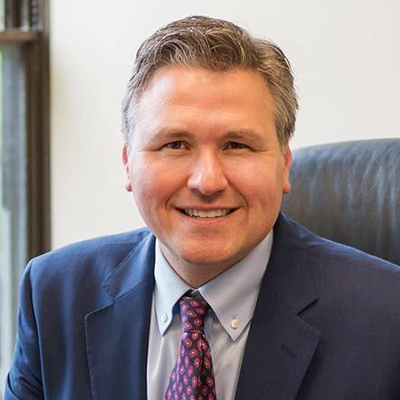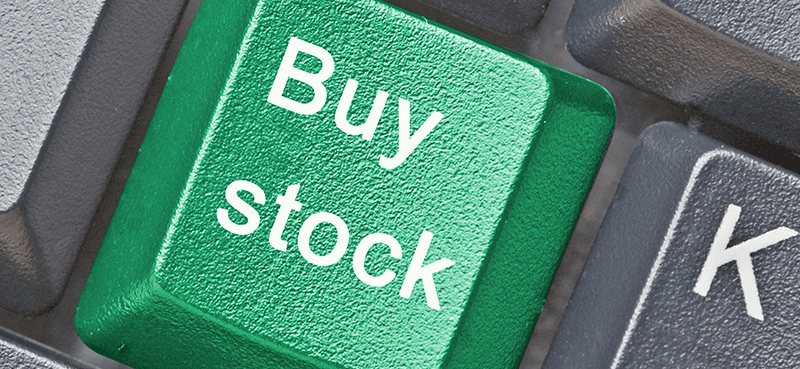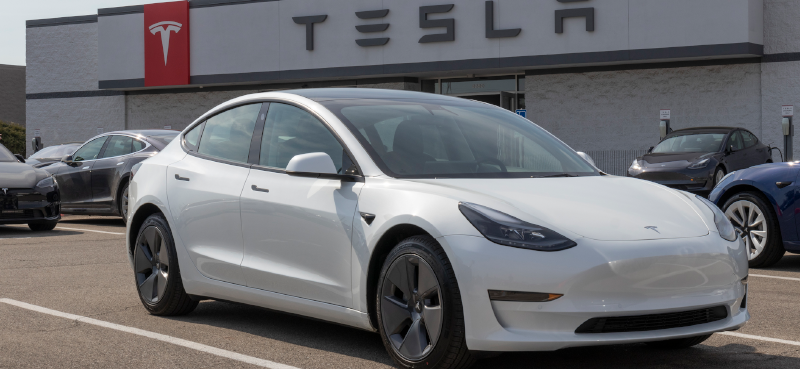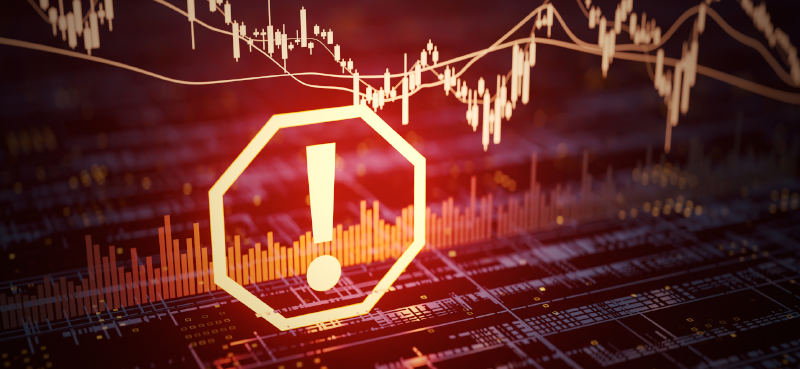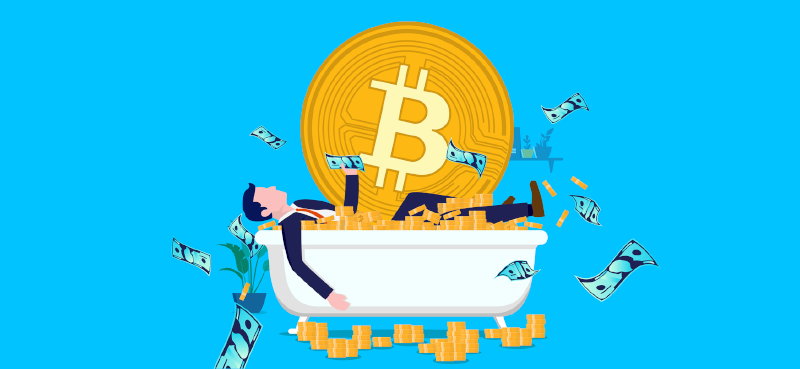John Petrides, portfolio manager at Tocqueville Asset Management, is a good friend and a favorite regular here on Wall Street Unplugged.
Today, John shares his predictions for the Fed meeting later this month… including what he expects to hear in terms of tapering plans. [00:50]
There are still a lot of unknowns surrounding the new tax plan making its way through Congress… and John lays out the issues it could create for investors. [4:18]
Then, he explains why “buy now, pay later” (BNPL)—an exciting new consumer trend we’re seeing across sectors—is great for both consumers and companies… [16:10]
Finally, John highlights one sector he likes for income investors… and one of his favorite plays on it. [28:00]
- John Petrides on the upcoming Fed meeting [0:50]
- Issues with the tax plan [4:18]
- Why the BNPL craze is great for consumers and companies [16:10]
- One of John’s favorite sectors for income [28:00]
Wall Street Unplugged | 794
Announcer: Wall Street Unplugged looks beyond the regular headlines heard on mainstream financial media to bring you unscripted interviews and breaking commentary direct from Wall Street, right to you on main street.
Frank Curzio: How’s going out there? It’s September 15th. I’m Frank Curzio, host of the Wall Street Unplugged podcast, where I break down the headlines and tell you what’s really moving these markets. So today, I’m happy to bring back my buddy, John Petrides, portfolio management, Tocqueville Asset Management, super smart analyst, always gives you great ideas, Fantasy Football expert. Should I keep going, buddy, or what?
John Petrides: Yeah, please. Don’t stop. Don’t stop with the praising.
Frank Curzio: So, how’s it going, man? How’s everything?
John Petrides: Everything’s great, Frank, we’re back from a much needed rest during the summer and ready to get started into what should be a busy fall season for the markets. That’s for sure.
Frank Curzio: Well, let’s address the elephant in the room because when I’m looking at the markets here, a lot of risks, right? We’ve seen inflation, really major concern. Everybody says it’s going to go lower. They better hope it goes lower, because that’s one thing the Fed can’t do where we can’t lower rates anymore. We can’t put more money in the system. Inflation means you got to take money out of the system, right? So, you have inflation. You have stocks. People say they’re expensive here. Delta slowing down the economy a little bit, you have Goldman Sachs over there, their GDP estimates, higher taxes coming from the Biden plan. Yet, we have a market where the Fed seems… They didn’t even talk about tapering in Jackson Hole. They say they’re going to do it. But even then, if they do it, it takes nine months, sometimes even longer than that. And the nonstop stimulus seems to be coming. Is this constantly going to be a buy the dip market? I mean, when are things going to change here?
John Petrides: So, a couple of things. I think the Fed could always do more if it needs to. I mean, there’s no limit to what the Fed can or can’t do in terms of pumping more money to the economy. We’ve learned that. In 2008, 2009, what was considered unconventional monetary policy of the Fed buying assets, now seems like it’s conventional. The Fed has $8.3 trillion in assets on its balance sheet and is continuing to buy $120 billion a month. I don’t think the Fed needs to be doing that anymore. I don’t think the economy is in crisis level monetary policy situation anymore. I think we were there, but we’re no longer there. And I think the reason why the Fed wasn’t more aggressive with its tone on QE easing during Jackson Hole was because I think they saw the jobs number was basically ho-hum from a headline standpoint.
John Petrides: The next Fed meeting is on September 21st and 22nd. I wouldn’t be surprised if they announce their taper lite program, and maybe they don’t start that program until January. Why interfere with a potential Santa Claus rally to year-end? Clearly, you’re seeing some inflation data on the wage side, and that’s something that they are keeping their eye on. But the Delta Variant has slowed the economy a touch in the short-term. So, why do anything, I think, from a Fed standpoint. They maybe they announce November, December instead of buying $120 billion in assets a month, they’ll do 110. Maybe they do 115, do something like that. And then try to give some sort of forecast as to how they reduce their asset purchasing over time.
Frank Curzio: Are you worried about the tax plan coming to the surface now again, and I don’t know if it’s going to get pushed through or not, because I just feel like when I look at the economy… Listen. When we have low interest rates, it’s a game-changer. You can’t even look back historically and say, “Well, when the market was this, it did this.” All that’s thrown out the window, right? We are throwing trillions into the market directly to people, not to backstop the banks this time, like we slipped into a credit crisis. Right. So, things are definitely different.
Frank Curzio: I just feel like there’s more and more risks that are coming up. If it’s geopolitical risks, like you said, inflation’s here. I mean, how much more can the market handle before we say, “Okay, you’re worried.” And is the Biden tax rate, is that already kind of on the table? I mean, that’s something where it’s the earning season, we need stories out there, and now we have tomorrow, September 11th, everyone’s trying to find the next big story, but it seems like that’s really it. That’s what everyone’s talking about. But is that a really risk to you or you think that’s kind of priced in?
John Petrides: The tax plan, I do not think is priced in. And part of that is because we really don’t know what it is yet. And I’m hoping this week, we actually have more clarity. What we’ve heard is that the current corporate tax rate is 21%. And what we’re seeing from industry experts is, that’s going to be raised to 25%. There’s really no pushback from either side of the aisle on that. There’s talk of increasing the highest tax bracket from 37% to 39%. Again, there’s not much pushback on that. Where I think it becomes a real issue for equity investors is, if you own stocks, if they increase the capital gains tax, there’s talk of that going up to 28% or even triggering it to your ordinary income tax rate. So, that basically means if you own a stock, you want to take a gain.
John Petrides: Listen, the stock market has been on a huge run over the past 15 months. There aren’t many losses to take. So, if you’re going to sell something in a taxable account, that means your profits on that, you could lose about a third of your profits on just pure capital gains tax. And then there’s some talk of them removing the step-up in cost basis. Very simply, if you die and you pass your assets on to your spouse or your next of kin, usually, if you bought Apple for $1 a share, when you pass it on the cost basis of whoever’s inheriting it goes up to today’s market value. So, you don’t pay the capital gains. There’s talk of removing that. So, when you pass that on to the next of kin, they are now burdened with this unrealized capital gain.
John Petrides: And that has a lot of estate planning implications for everybody, really, who’s going to potentially inherit some sort of assets. So, I think the removal of the step-up in cost basis, probably unlikely, but the other items are still on the table. And then it comes down to, when do they make that retroactive assuming they’re past? Is this something that they announce, there’s an increase in the capital gains tax today? The bill passes on December 31st. And does that start January 1st 2022, or do they retro it back to the date that it was announced? I think that’s a big risk. Now, the Fed knows that this is coming down the pipe. So, don’t sleep on the Fed trying to coordinate monetary policy with fiscal policy. I don’t think the Fed is going to slam on the brakes at the same time that the likelihood of a Biden tax plan gets passed at the same time. There’s definitely coordination there, I think more than most people appreciate.
Frank Curzio: And you bring up a lot of good things. I think the capital gains tax… I mean, going back makes sense because if that’s an announcement you’re going to see. I mean, everybody… That could result in a 20% market correction, I mean, everybody who has long-term capital gains, which is a lot of people because of the gains, and I’m talking about short-term, right, which is taxed differently. But holding those things over 12 months, if those capital gains are going to be that much higher, it’s going to force a lot of sellers… Maybe they buy that back, whatever, a month or two later, or whatever it is. But I would think that… I mean, I know that’s what I would do, right? I mean, you want to save money.
John Petrides: It depends on when they make it retro. So, let’s say for example, that on September 16, they announced the package, right. And you know, it gets debated and everyone says, “Oh my God, I’m going to sell now because this is going to happen. And I’m going to sell on September 17th.” Well, you may already be locked in if they retro back the capital gains tax to the 16th. So, it’s not like you’re going to be front-running anything; you’re going to be stuck. You know? And I think the situation is, it is what it is.
John Petrides: Taxes are going up. Now, on the other hand of this, a mansion democratic leader is really pushing back on Pelosi and Schumer on the infrastructure package. I mean, part of the reason for the push to increase taxes is to fund the infrastructure package. And he is not agreeing with the massive amount of spending that Schumer and Pelosi seem to be wanting to push through. So, I think the whole crux of what we’re discussing here, Frank, is that there are still a lot of things up in the air. It’s hard to plan one way or the other, knowing that these things are out there. And I think that’s what adds to uncertainty and to some investor skittishness.
Frank Curzio: Exactly, exactly. You hit the nail on the head. The markets hate uncertainty. They would like to know exactly when it is so they could adjust… But when you have the uncertainty and the back and forth… And yeah, I hear you.
John Petrides: Now, Frank, push that aside. Those are all manmade forces, I guess, for lack of a better term, right? Monetary policy, which is manipulating the… Which is influencing-
Frank Curzio: You said it, right.
John Petrides: Market conditions. Yeah. Tax policy, which is sort of out of our control. That’s a political issue. Look at company fundamentals and they’re really strong. I mean, balance sheets are really strong. Every company under the sun is taking advantage of low interest rates, of either pushing out debt, or refinancing debt, or taking on debt at really low cost of capital. Profit margins continue to expand. Companies are doing more with less. Now, you’re in a situation where companies feel comfortable enough with their current situation, where we were 12 months ago, companies were skittish as to where we were in the future with COVID. Now, they have all this cash and they’re returning it to shareholders. They’re buying back stock, they’re participating in M&A, they’re increasing or restarting a dividend or growing their dividend or increasing their payouts on a dividend. All of those things are good things. So, company fundamental standpoint, fundamentals are actually quite strong.
Frank Curzio: Yeah. I mean my biggest concern, I’m with you, right? I’m bullish on the market here. But my biggest concern is the fundamentals are strong now, and they’ll probably be strong for another quarter. But wages are up incredibly, where it costs a lot of money to hire great talent. We’re seeing that, especially in the oil industry. You can’t just hire a guy off the street, right? So, wages are rising. You’re seeing the auto industry with supply issues. And now, all of a sudden, which we were kind of calling because we have great contacts in that industry, that this isn’t a one or two month problem like the CEO’s from GM and Ford were telling us. And now, it looks like it’s going to be years, which is good. You’re pushing it out. At least you’re throwing it out there, not pushing out quarter after quarter and missing it.
Frank Curzio: I’d rather see a longer term time horizon. And then, you have just commodities, right? And we saw at 3M, a lot of these companies saying, “Listen, we’re raising prices.” And some of these companies have pricing power. And that’s why you’re seeing earnings through the roof. But I wonder how long they could have that pricing power for. Maybe they have it long, and maybe they don’t. But it is an interesting conversation. The fact that we’re talking about this and there’s risks on the table, I feel like we’re in a great market because no one’s super crazy bullish, and no one’s… Well, we do have people that are crazy bearish, but they’ve been crazy bearish since they were born. But it’s a good market, right? It’s not like total optimism. Goldilocks is something that I like to see. But I am bullish, but I see the risks starting to pile up a little bit.
John Petrides: Frank… Go ahead. I’m sorry.
Frank Curzio: No, no, no, because it’s going to go into to another segment that you’ve been covering, that is very interesting. I know some of you are very familiar with it, especially if you’re an investor. But the buy now pay later thing… I mean, is that a sign of the changing of the guard when it comes to banks? Is it just another alternative asset class kind of thing, even though it is kind of banking, where this is dedicated to, I think, all my shopping on e-commerce, obviously. But just the younger investors really, it’s kind of like permanent layaway online. But this, all of a sudden, when I say the media is covering it, but now it’s starting to boom, where everybody is. JP Morgan, Apple, PayPal, we just saw a big acquisition from Square, right? $29 billion for an Australian company in this space. What are your thoughts? Because you’ve been covering this space. And I think a lot of people want to know about it and how to play it.
John Petrides: Yeah. So, you threw out a lot there. So, let’s unpack it in a couple of ways. The first one is, I think, in terms of the market, you know. The fact that we’re not… Yes, valuations are above historical averages, there’s no question about that. And I think that until fairly recently, investors are skewed more to being bullish rather than bearish for now. Clearly, the bears are getting a bit louder. But to that point, there’s $4 trillion sitting in money market funds right now, $4 trillion. So, this whole buy the dip mentality or strategy, I think has a long runway, because if you’re earning nothing on your cash. And when you account for inflation, high quality bonds are earning you negative rates of return, right? Where are you going to go? This whole idea of when you see the market sell off one, two, three percentage points over a period, it doesn’t last long because there’s so much cash inside it.
John Petrides: I mean, Frank, we’re going on almost a year now where we haven’t had a 5% correction, which is leading a lot of people to say, “Well, I’m waiting for when the other shoe is going to drop?” There was a wealth manager strategist out last week that caught a lot of headlines saying, “Oh, the market’s pending for 10 to 15% sell off,” something like that. And the answer was, just because… I don’t agree with something like that. There has to be a reason for some… And at the same time, the person was saying, “Well, you should buy cyclicals.” You don’t buy cyclicals if you’re expecting a 10-15% correction. Oh, and by the way, I don’t know about you, but anytime the market sells off 10-15%, the world is coming to an end, is how people respond.
John Petrides: If you remember the fourth quarter of 2018, the markets sold off like 15% during that quarter. And you thought that it was the apocalypse. All right. So yeah, “10-15% sell off. No big deal.” I’m not forecasting that, because I do think that there’s a lot of dry powder on the sidelines that will come in and protect the bottom here. Unless of course, some of the most draconian parts of the Biden tax plan gets pushed through, and/or the Fed steps on the brakes significantly harder than the market expects. Those are two flies in the ointment that can derail my thoughts here on where I think that we’re in this TINA market, there is no alternative to stocks. The second one is inflation. You’re right. It’s going to be company by company, industry by industry, on how effective and how long they are able to pass through pricing to their end consumer.
John Petrides: I do think the supply chain issue is here for an extended period of time. My wife and I tried to buy a sleeper sofa. We bought it in May, and then we got the call over the weekend from the sales person that it may not come until December. So, that’s happening to everybody across the world, multiply that by 10, if you’re in the auto industry or some of the other places that are requiring chips or some of these other places, I mean the supply chain is all gunked up. It’s going to be for a while. However, I do think that there could be some positive economic news to that as when inventory does become available, companies are going to restock their shelves because they don’t want to go through this again. So, you’re going to see some inventory pull through because you’re just going to buy more whenever it’s available.
John Petrides: So, you have it to fulfill the demand that’s out there. Let’s talk about BNPL: Buy now, pay later. And I think this has the potential to be revolutionary to consumer spending. And I’ll use Apple as the example. Frank, we’ve discussed Apple ad nauseam over the years, and you and I have been friends for six or seven years now. We’ve covered Apple multiple times. And the bear case on Apple was that they can’t live and die by iPhone alone. They’re going to have to either get into more of the service business, or they’re going to have to come up with new products at higher margins. That’s just how it’s going to have to be. An iPhone at the time was highest margin product, 65% of sales. In 2015, 2016, Apple did see pressure their margins because iPhone was evolutionary, not revolutionary.
John Petrides: And then they did something clever, I think around 2017 or 2018, where they struck a deal with the wireless carriers, and they allow you and I to amortize, to break down the cost of our iPhone, along with our monthly cell phone bill. So, instead of ponying up 800 bucks today to buy the latest iPhone, I’m going to pay 40 bucks a month for four years or whatever the math works out to be, and people will do that. They’ll spread out the cost of the phone. It used to be like, I remember in 2006, 2007, I had a colleague of mine who was from Italy. And he was gushing over Nokia. Remember Nokia? Their N95 cell phone. And he was going to pay like $795 for a phone. Back in 2006, 2007, we as consumers in the US would never pay that for a cell phone.
John Petrides: We wanted the carrier, AT&T and Cingular and Verizon, to cover the cost of the phone to subsidize it. Right? We would never do that. We weren’t going to pony up that much. Now, fast forward 15 years later, if we can amortize the cost of the phone, it doesn’t really matter. We’ll pay it, which has allowed apple to keep the margins because they can keep pricing higher on iPhones. Now, translate that to buy now, pay later, take that same concept and apply it to just about anything. Frank, since 2008, we’ve been in this low interest rate environment, and I have purchased so many things for 0% interest, where I’ve been able to spread out the cost and pay it monthly for like two years. I bought beds. I bought a generator for my house. This furniture that I’m buying now, 0% interest rate.
John Petrides: Why not? Why do I have to fork up 1000 bucks, 2000 bucks, 5,000 bucks up front, when I could spread out the cost? As long as I make the payment, I don’t get caught with the interest of missing the payment, for 0% interest where I cost the capital’s zero in perpetuity. I’ll do that forever. I used to joke around with my friends, I’d say, “Hey, I’d finance a slice of pizza if I could do it for 0% interest.” Well, buy now pay later is becoming more ubiquitous where I may be able to buy a slice of pizza and amortize the cost of it over a couple of months. You’re seeing PayPal, Square, and it got to the point where a bank, Synchrony Financial, which is a credit card company, is now getting into buy now pay later. So, think about it.
John Petrides: Here’s a credit card company that makes its money on basically fees for the credit card and overdrafts, or when you miss a payment, they get the consumer on the interest payment, is now moving into buy now pay later. And buy now pay later is simply… You want to buy a notebook for 10 bucks? You could spread out the cost for five months, paying $2 a month. Now, think about the implications on that across every consumer industry. If I could buy now pay later for everything… I’m not as price sensitive, like my iPhone is, upfront, because I’ll take the 800 bucks and just spread it out over time, because I won’t have to lay out the cash now. That has massive implications to how the consumer thinks and spends because it’ll push out all that spending, allow me to live in the moment, for lack of a better term, because a consumer can manage their cash better, but it also gives the company more pricing power.
John Petrides: You know, if Apple increases the iPhone 2%, I’m never going to feel it because I’m going to pass on my cost for two years. So, I think that has massive implications for how consumers spend, but also how companies price. And it makes the consumer and the company’s pricing power more elastic, meaning that the consumer will expand its ability to accept more pricing, and the company to pass through its pricing further. I think it’s really, really important. And I think where it’s buy now pay later, although it’s a layaway, it’s resuscitating a consumer strategy from 30 years ago, is now becoming more ubiquitous and easier from a digital standpoint where we can amortize just about the cost of everything. And that could be the notion of where we’re headed.
Frank Curzio: Yeah, it is an interesting concept. It makes sense. It’s taking away interest payments, right, which is going to hurt. And not even that. We’re seeing even Bitcoin disrupt… You’re paying no processing fees at Starbucks compared to paying that, I have my own business, we do all online subscriptions, and yes, that’s a big cost, right? That’s factored in. That 3%, 4%, whatever it is for small business compared to a large business. I mean, that’s huge. Sometimes, that’s profit margins for some companies, but do you worry? And you don’t have to worry now at the beginning of the industry, but I think this is a fantastic idea. And I think it’s a cool idea. I think it’s disruptive, but so was mortgage-backed securities. Mortgage-backed securities is a really good idea. Let’s pull all these loans together.
Frank Curzio: And even if they’re subprime loans, people think the subprime loan was the reason why the market crashed. It was the leveraging, right? So then, everyone went crazy and leveraged four to one and created synthetic loans. Are you worried about that? Because we are focusing on a market where these people need to borrow money, there’s not a lot of credit checks being done with this money. And if people refuse to pay, what is going to happen? We’re not there yet as this industry grows, and maybe they’re all going to be safety checks and stuff like that.
Frank Curzio: But, should we be concerned about that now? Or, are we just going to be in a major growth trend? And then one day just like every other growth trend, whether it’s Bitcoin, whether it’s this, whether it’s technology, right, everything just gets so far ahead of itself. Then you’re like, “Wait,” and everybody tries to take advantage of it. But I just feel like this is a market that could easily, you could take advantage of, create your own app. You’re seeing these things get multi-billion dollar valuations right off the bat. I mean, even in Europe and every place. Do we have to worry about that yet? I’m curious.
John Petrides: Yeah. So again, a lot of things there. Mortgage-backed… Despite the subprime crisis… Listen, by way of background, I was at Bear Stearns Asset Management, and basically, the hedge fund that started the subprime mortgage back leveraged 30 to one was the floor below me. So, you’re talking about someone on ground zero, who went through that time, but mortgage-backed securities haven’t gone away. You know what I mean? Just because there’s now more regulation. Clearly there was a bubble. Clearly everyone fell asleep at the wheel. Who was guiding that market? But it’s still here. It’s still an effective product. It’s still necessary.
John Petrides: So, could there one day be a bubble in buy now pay later if Wall Street gets its mitts on the industry and creates some sort of synthetic product, where it’s over promising returns and undelivering results? Of course. But I don’t think that means it goes away. Buying a home was in a bubble. Now, the housing market’s really strong. I think this is here to stay. Could there be the hiccups in the road over the long-term? Sure, of course. We’ll cross that bridge when we come to it. But I think the idea of buy now pay later is here to stay.
Frank Curzio: No, that makes sense. That makes sense. So, okay. Let’s-
John Petrides: Yeah. One way, I guess, to your next point is how do you play it? Right? So, we have, for our clients, for our team, we run balanced strategies for the most part. We have a core equity component. We have a fixed income component. We have an enhanced income focus component. And then we run a thematic portion, a small cap thematic portion. And through that we use ETFs. And one way that we’ve invested in this theme of buy now pay later, or financial technology, has been the global FinTech ETF, FINX.
John Petrides: I own this personally, we own it for our clients that have this component, this thematic portion within a portion of their asset allocation. And again, the long-term theme is within FINX, you have exposure to buy now pay later, PayPal Square, Coinbase. So, you do have exposure there, into cryptocurrencies where you don’t have to play the crypto directly. And if you believe that’s a long-term theme, you have some exposure there. So, we think financial technology, and again, moving to a cashless society, and not literally in the form of a crypto, but moving to the fact where we’re just moving money more digitally, which was clearly a theme that I think was accelerated during COVID. Right? I mean, I can’t tell you the last time I paid cash for something. So, we think that trend is going to be with us for a very long time.
Frank Curzio: Yeah. That’s why my audience loves you because a lot of people say, “Well, this big trend is coming,” but they don’t give you a way to play it. And that’s a really cool way to play it. And it’s a safe way to play it in terms of buying all these names, instead of saying Square, it’s only going to count for this much. But when you combine all those and you throw in the Coinbases and stuff like that, and like you said, the PayPal’s that’s a great way. FINX. Now…
John Petrides: Yeah. Frank, just one last point to that. I mean, when you’re investing in a theme like this, you have to step away. If you’re thinking, “Well, oh my God, what’s Square going to do next quarter? I’m nervous about this.” You’ve missed the boat. This is the point of an owning of FINX in your portfolio. Maybe even like an IRA or Roth IRA, something with a long-term where you don’t have to deal with capital gains or something, is that you believe this trend of, again, moving from a cash society and BNP, and all of this is here for a long time. That’s the juice, right? You’re in it for the long haul. You know what? I like this theme. I’m nervous about some of the valuations, some of the companies, let me just own it in a basket form. And I’m happy with that. That’s kind of the purpose of this portion of client portfolios.
Frank Curzio: Yeah. And it’s hard to tell with valuation, because people thought Square at 40 and 50 was overvalued and saying it was going to crash. Right? I mean, it’s just, you don’t know. Growth. It’s about growth.
John Petrides: Frank, I thought Amazon was fairly valued at 300.
Frank Curzio: Listen, I was there. I was there with Moderna at 90 saying, “You’re crazy.” You don’t know. But they filled in the numbers, right. Just like Apple was trading at 60, 70 times earnings at one day, so was Microsoft. These are high growth companies. A lot of people avoid them because they’re at a high PE, but it’s all about that growth. If you continue with that growth. And this is a new market that has… What was it, 19 billion? There’s 18 trillion. I think the number is, in total annual consumer spending. I mean, you take just a quarter percent of that market and you’re looking at whatever. You guys could do the numbers. I want to get two more questions in really quick, we’ve got about three, four minutes. So, any other sectors or ideas that you’re looking at?
Frank Curzio: I mean, we covered just a few here, but anything else that you’re looking at in this market where people are worried? And you said earlier, real quick, I don’t know if this is a whole other conversation, we could save it for another time, but I don’t know about people making market calls because to me it doesn’t make sense. When I look at the Russell 2000, seeing the last three to five months, 60%, close to 70% of the stocks are down. People don’t realize that, but yet it’s so heavily weighted towards some of these stocks where you’re not… A lot of people like Win, Win’s down 40%. Some of these stocks are down 30%, 25%, but yet as long as you see the big names go higher and higher, it seems like the market’s doing well with people. But underlying, it’s a tough market. So, how are you playing it here other than some of the things that you already mentioned?
John Petrides: So, I think the first thing, I think right now in today’s moment, I think patience is a virtue. If you’re in the equity, if you’re in a stock, if you’re a stock investor, I think right now is a really good time to make sure you have your shopping list ready. If there is some sort of pullback… We’re only three, four weeks, maybe a month away from earning season starting again. We have a lot of variables with the Fed and with taxes. So, I think it’s important to have your shopping list ready on companies that if they were to pull back a little bit, that you’d be interested in buying in. The second thing is in terms of making a market call, if there’s one thing that we have learned is, you only lose money when you sell.
John Petrides: So, if the stock market is down 10%, doesn’t mean you lost 10% of your money. It’s just that you’re down 10% from where you were at some peak. And one thing that we’ve learned since 2008, Frank, just because we’re down, we’re not out. Someone says, “Okay, if the market drops 10-15%, then what?” If your downside is 10-15%, what’s your upside? If your upside is 35, 40%, well then the upside clearly outweighs the downside, right? So, I think that’s important to realize, that just because we’re down, doesn’t mean we’re out, and you have to stay emotionally strong, and make sure that when the market is down and you do have that buy list ready, you’re able to put money to work.
John Petrides: I think in terms of a sector or a theme or ideas, that I think is interesting, the last couple of years of pounding the table on income-producing names, I think finding yield is still at a premium. You can’t earn anything on your… With inflation levels higher than they were this time last year, your cash is burning a hole in your pocket. Bond yields are not high enough to earn you enough income. So, I do think income-oriented equities or income-producing assets, maybe non-traditional assets, if there’s some high yield bonds that may be interesting or preferred stock, but if you want to not get too esoteric and you want to be in stocks, I think REIT sector, real estate investment trusts, are still interesting despite being, I think, the best performing sector in the S&P year to date.
John Petrides: One name that I own personally, and we own for our enhanced income strategy, which we’re trying to get more yield, but less volatility, and in client portfolios is a company called Physician’s Realty Trust. The ticker is DOC. This is a medical office property, a medical office building REIT. About half of their portfolio is off hospital campus medical centers. So, when you go in for an MRI or a CAT scan or something along those lines, and you go into an office building, you go for a specialty checkup with specialty doctor, you go for a hip replacement or something along those lines, those are the tenants that these guys service. They’re a triple net lease, which means the tenant pays all the taxes, all the utilities, everything.
John Petrides: They basically had no hiccup to their rental collection or to their tenants during COVID, which is amazing in the REIT space. You’re getting a near 5% dividend yield, the net asset value, when you take the value of all their assets minus their liabilities, per shares, around $17 a share, the stock’s about $18.30 or so right about now. It’s a little bit of a premium to the net asset value, but I think you’re getting a high quality company with a really strong balance sheet and a near 5% yield, which I don’t really see much risk to.
John Petrides: And most of their tenants, in fact, I think the company has disclosed, I don’t think they have one tenant that is a psychiatrist or a psychologist where their clients can be handled via Zoom. Everything is in office, right?
Frank Curzio: That’s great.
John Petrides: So, you have to come to the doctor’s office. So, I think the quality of the cashflow is really where they’re strong. And usually they set up contracts with their tenants where they have inflation riders, rental increases. So, as the cost of inflation goes up, they can pass it through, they have it locked in through their tenant, which again means that the underlying cash flow is fairly secure. And so, I think it’s a fairly interesting and safer way to get some yield in the equity market.
Frank Curzio: I like it. Okay. We have a minute left. This is the most important part of our whole interview. Fantasy Football. Hopefully you don’t have any Green Bay Packers. How do you like your team so far? Because we always discuss this at the beginning of the year.
John Petrides: Yeah. So, teams, right?
Frank Curzio: Mm-hmm.
John Petrides: I’m in four leagues, of course.
Frank Curzio: Four leagues. That’s crazy.
John Petrides: Yeah. Two of those leagues with my son. I mean, so I definitely diluted myself here. And I split two and two for week one. Matthew Stafford was my value pick. So, I took him in like the 11th or 12th round in most of my leagues. And he did really, really well. What hurt me was, I did up Gus Edwards, who was the running back for the Ravens, and the day after all my drafts, he tore his ACL. And that was the end of that. So, I have to fill the divot of losing my fourth round pick in most of my leagues. That really hurt me in the two leagues that I lost. But I’m happy. Football’s back. I’m happy. We’re talking fantasy football.
Frank Curzio: It’s nice. It’s electrifying.
John Petrides: It’s a lot of fun this time of year. Yeah.
Frank Curzio: The fans there. I mean, it was great. It was great yesterday and this weekend, so it was really awesome. But I mean, four leagues is a lot. Two leagues, I’ve done more than two leagues a couple of times, I said I’m not going to do more than two because then you’re playing against guys and you have them. And it’s crazy.
John Petrides: Listen, if my son… If we weren’t doing it together, there’s no way I’d do four leagues. But if it’s another way to chill with my kid, then I’m all for it.
Frank Curzio: So, John, really quick, before we go, if someone wants to get in touch with you, learn more about you and just about you and your company, talk about how could we do that?
John Petrides: Thanks, Frank. Yeah. So, check us out on tocqueville.com. Toqueville has been around since 1985. We’re an independently owned, employee owned, a registered investment advisor. And we work with our clients. We build customized portfolios. Tocqueville has about 9 billion in assets. Under management, my team manages about 1.5 of the 9 billion. And again, we sit down with everybody and customize portfolios across our solutions. And again, those investors looking for yield, our enhanced income strategies, we’re getting about 4% in income now.
John Petrides: So, we’re trying to get more yield than a bond market with less volatility in the stock market. That’s been a really good solution for retirees looking to get some cash from their portfolio and not touch the underlying principle and grow the cash flow over time. You can find me on Twitter, I’m @JPetrides2, or hit me up on LinkedIn as well. And yeah, that’s pretty much it. So, I appreciate that, Frank.
Frank Curzio: As always, love having you on. Great, great guy, just always providing ideas. And I always love talking to you and we need to do this a little bit more because I love getting ideas from you. We share ideas and more important is you’re just a great guy, have been friends for a while. I love having you on. You can tell you care how much research you do. And I really appreciate it, buddy. I really do.
John Petrides: Same thing, Frank. Your service is… You do a great job of helping educate people, because this is not… Particularly in a Reddit world where, in a Robinhood account world, where people can buy one share or something like that, and view stock market as gambling or betting. And it’s not. You know, gambling or betting, there’s always risks that you’re taking. But through analysis and expanding your all-time highs, and just looking at the numbers, you could increase your probability of the investment you’re making, so much more than sitting at the blackjack table or rolling the roulette wheel or throwing dice on a craps table.
Frank Curzio: So true.
John Petrides: Here, you get to free up or firm up the probability of the investment you’re making. So, I think you do a great job of helping people understand those themes, and sift through the numbers, and wrap a rope around what’s a complex topic. There’s no question.
Frank Curzio: No, I appreciate that. I appreciate it. So, listen, anything you need, always, I’m there for you, give me a shout.
John Petrides: Appreciate it.
Frank Curzio: You’ve been there for me. And especially if you need anything in Fantasy Football, let me know, because I might be picking-
John Petrides: Yeah. Two and two start, I may be calling the Batphone, the Curzio Batphone, sooner than later.
Frank Curzio: All right. You got it, man. I’ll talk to you soon.
John Petrides: Thanks bud.
Frank Curzio: All right. Take care. All right, guys. Great job from John. Listen, love the guy. Awesome analyst. As you can see, he puts the work in, always giving you ideas and not just giving ideas, but giving you ideas of performance, which has been fantastic over the years for us. So, really, really great stuff. But again, this podcast is about you, not about me. Let me know what you thought of that too, frank@curzioresearch.com. So, that’s it from me. Really appreciate all the support, and I’ll see you guys tomorrow. Take care.
Announcer: Wall Street Unplugged is produced by Curzio Research, one of the most respected financial media companies in the industry. The information presented on Wall Street Unplugged is the opinion of its hosts and guests. You should not base your investment decisions solely on this broadcast. Remember, it’s your money and your responsibility.
Editor’s note:
Earlier this week, Luke highlighted the reasons for the “land grab” in the BNPL space… and shared two funds that let investors capture the potential upside.


